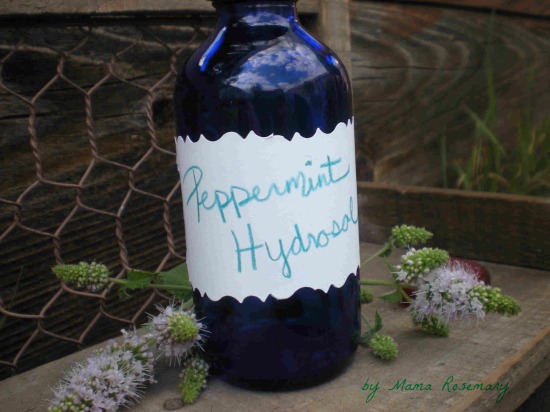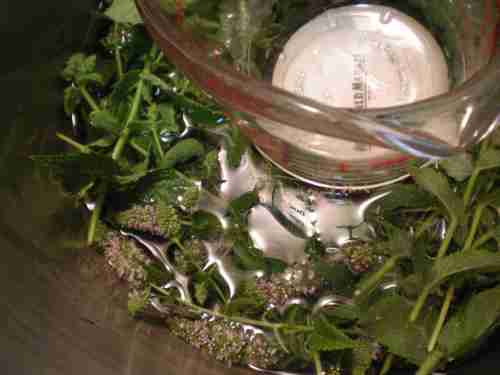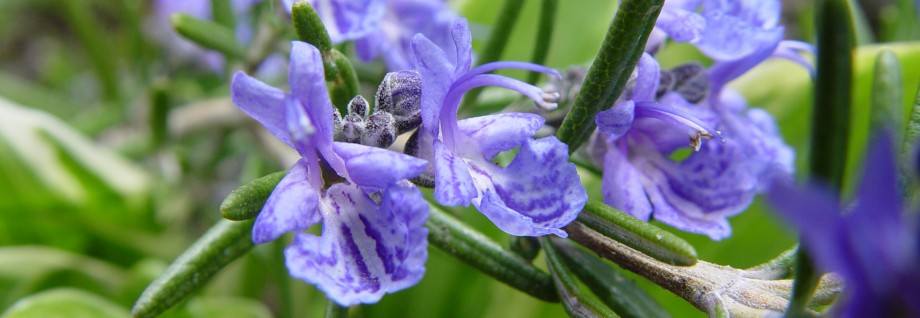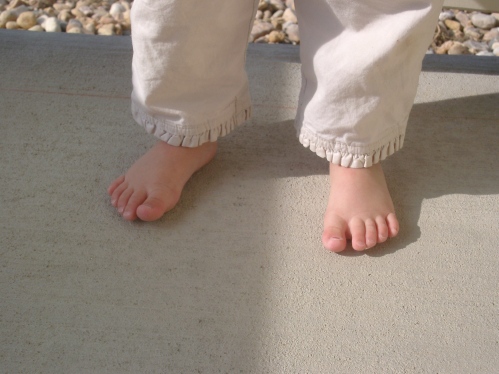
To me the scent of wild things, of plants and flowers is truly enchanting and brings great joy to my life. Essential oils and hydrosols capture a bit of that magic for us humans to enjoy any time. Hydrosols are the aromatic water that is created during steam distillation of essential oils.
Hydrosols are different in their healing properties than aromatherapy spritzers where essential oils are simply added to water. This is because in addition to small amounts of essential oil, hydrosols also contain water soluble healing compounds. Among these compounds are plant acids which lend themselves beautiful as toners for the skin. Hydrosols are generally considered to be gentler and safer to use than their essential oils counter parts. According to Sagescript hydrosols “contain the beneficial products of essential oils plus more and in a less concentrated, safer form.”
You can use the following method* to make homemade hydrosols from any number of fresh plants and flowers. Consider using roses (of course!), lavender, calendula, lemon balm, catnip, rosemary and any other fragrant or soothing plant. I think chamomile would be especially nice.
Today we are making peppermint hydrosol. The good folks at Mountain Rose Herbs say that peppermint hydrosol is great for cooling down on a hot day and that it is “it is particularly helpful for abrasions, hot spots, and as a facial toner.” I think it will make a perfect spray or compress for cooling down on a hot day.
~ Materials ~
- Large pot with a lid, a pot for canning works great for this.
- Small bowl or container to go inside your pot to collect the hydrosol.
- Something heat-proof to stand the smaller container on inside the large pot, a jar rack works perfectly for this. If you don’t have one of these don’t despair. Try using heat-proof ramekin instead.
- Water, distilled or filtered
- Ice cubes
- Peppermint (or other plant material)
~ Method ~
Place the rack or ramekin in the bottom of the large pot and put the small bowl or container on top of the rack/ramekin.

Next fill the bottom of the large pot with plant materia. You want the plants to reach up to the smaller bowl. Then fill with water until the plant material is just barely submersed.

Finally put the lid to your larger pot upside down on top of the large pot and fill it with ice cubes.

Heat this whole set up just enough for the water surrounding the peppermint to steam but not boil. Let it work it’s magic for 20 minutes or so. We used a clear lid so we could watch the hydrosol condense!
~ How It Works ~
The water will steam the plant material carrying all the goodness from the plant into the air. The steam collects on the lid of the pan and condenses due to the ice cubes. Because the pot lid is upside down, as the steam turns back into a liquid the liquid is directed to drip down into the smaller bowl. This liquid is your hydrosol! Pretty cool, uh?
Please store you new hydrosol in a dark glass bottle in the refrigerator.
Enjoy!
~ How to get kids involved with this project ~
If you have read my blog for long, you know that sharing herbs with kids is a great passion of mine. So of course, getting them involved in this fun project is a big plus for me. Here are a couple of ideas for sharing the fun with little ones!
 Have them help you harvest the peppermint. Explain to them that cutting the mint right above the point where two leaves sprout off the stem helps the plant to grow two new stems. This is because there are baby leaf buds nestled in right above each individual leaf.
Have them help you harvest the peppermint. Explain to them that cutting the mint right above the point where two leaves sprout off the stem helps the plant to grow two new stems. This is because there are baby leaf buds nestled in right above each individual leaf.- Ask the child to help you set up your still. And share with them what is going to happen. This is a great time to talk about water and all of its forms. The liquid water in the big pot will heat up and turn into gas or steam. This is like a big peppermint infused cloud. The solid water in the form of ice cubes will help the steam cool down and “rain” into the bowl.
- Explore your new hydrosol together. Spray it on yourselves and talk about the effect on your body and mind. Taste it and cook with it. Make lotions together too!
For more fun with mint join me at our summer herb camp where we have a whole lot of magical minty ideas!
* Jeanne Rose’s Herbal Body Book is where I found this great way to make your own hydrosols. I stumbled upon this awesome book years ago when I was a teenager. For weeks I coveted and saved until I could purchase it and bring it home with me. My first sojourn into making hydrosols with this method was way back when. I made the most beautiful rose water right in my family’s kitchen. So incredible!
References:
- Jeanne Rose’s Herbal Body Book: The Herbal Way to Natural Beauty and Health For Men and Women by Jeanne Rose
- Aromatherapy, A Complete Guide to the Healing Art by Kathi Keville and Mindy Green
- Mountain Rose Herbs
- Sagescript





 Materials ~
Materials ~  Carefully add the oil and essential oils while stirring to limit any bubbling action in your bowl. Finally add the witch hazel a bit at a time, again stirring while you go. I actually put the witch hazel in a spritzer bottle and spray it in to the mixture a couple squirts at a time. This worked really well for me. Keep spraying and mixing until the mixture holds together when you squeeze it in your hand. Mold the bombs with the kids by having them tightly pack the mixture into a mold. ~ as I said I brought in a few different shapes to choose from with plastic eggs as one choice. Using half off a plastic egg creates a little volcano shape. You can use what ever you have on hand and even just shape them with your hands by squeezing the mixture into whatever shape you want.
Carefully add the oil and essential oils while stirring to limit any bubbling action in your bowl. Finally add the witch hazel a bit at a time, again stirring while you go. I actually put the witch hazel in a spritzer bottle and spray it in to the mixture a couple squirts at a time. This worked really well for me. Keep spraying and mixing until the mixture holds together when you squeeze it in your hand. Mold the bombs with the kids by having them tightly pack the mixture into a mold. ~ as I said I brought in a few different shapes to choose from with plastic eggs as one choice. Using half off a plastic egg creates a little volcano shape. You can use what ever you have on hand and even just shape them with your hands by squeezing the mixture into whatever shape you want.
















